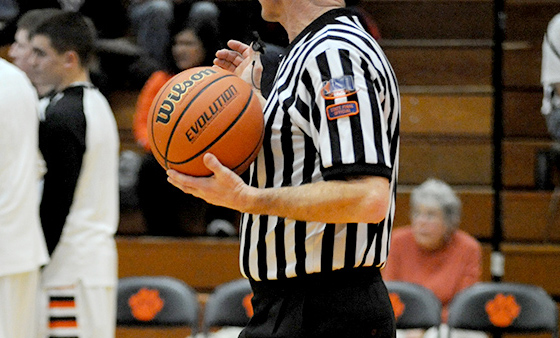Q&A with award-winning athletic trainer Sam Lee

Sam Lee, athletic trainer at Hawaii Baptist Academy in Honolulu, believes putting certified professionals inside all schools is an attainable goal — it just requires some creativity. Lee was recipient of the 2015 District 8 Gatorade Secondary School Athletic Trainer Award, helping his state’s athletic association develop comprehensive heat acclimatization and practice schedule guidelines in addition to establishing a concussion management program at his own school.
“I feel there are a lot of great athletic trainers, not just in my state or district, but across the country, so the (award) was very humbling in that sense,” Lee said. “It was a wonderful honor that I didn’t expect.”Those interested in nominating an athletic trainer for the Gatorade Secondary School Athletic Trainer Award can do so by clicking here. Each district winner receives a $1,000 grant toward their program, a Gatorade sidelines cart and a Gatorade performance package. They also win a trip to the 2016 NATA Clinical Symposia & AT Expo.
Lee recently spoke with Coach and Athletic Director about healthcare, athletic training and the biggest issues in team sports. Here is what he had to say.
Hawaii’s public high schools all have athletic trainers on staff. What kind of impact has that had?
I think it’s had a big impact. I feel a lot of folks across the nation are very proud of the fact that they have wonderful athletic facilities, and they should be, but along with those resources I think people don’t always see the need for human resources for health and safety.
When you think of good athletic programs, you think of winning traditions and coaching, but what are they doing for health and safety? We can win all of our games, but if somebody dies on the field, that’s not going to matter. That’s one of the neat things about Hawaii. There is really a culture of cultivating human resources in health and safety in the athletic realm.
Do you see a shortage of athletic trainers in team sports?
In the industry overall, yes. It’s still mind boggling that districts and communities put so much into other resources and not the health care resources that are available. We are a membership nationally of over 40,000 people. To be able to have that as a resource for an athletic program is invaluable.
At least seven high school football players have died this year after suffering on-field injuries. Are we failing to protect young student-athletes?
I can’t promise people that by having an athletic trainer on the sidelines you won’t have player injuries or deaths. But the people that are in charge of athletic programs must provide the best environment and the safest environment and the resources in which to make sure they’re lowering the chances of that happening to a great degree.
If there is no athletic trainer on the sidelines, that’s a tough call. You should have invested in having an athletic trainer on the sidelines with a healthcare background that could be your eyes and ears.
High schools don’t have access to the resources available in pro or college leagues to immediately identify on-field injuries. Is that a major obstacle?
Sure, I’d love to have someone sitting in the press box looking to see if something happens that maybe I can’t see from the field. But I think having at least one athletic trainer at each high school is something that’s doable. I talked with my athletic director, and he said looking at the data, his question didn’t become “how can I afford an athletic trainer?,” it became “How can I not afford to have one when liability is such a big issue?”
That’s something a community has to decide on its own. But the right athletic trainer in the right setting at the right school will prove invaluable.
How big of a problem is sport specialization from a health and safety standpoint?
I do see that as a problem, but how big of a problem is hard to say. We see runners or soccer players developing shin problems or lower extremity problems from too much running when they should be trying to take a break. Overhead athletes, like volleyball, they have a lot of the shoulder injuries that could have been avoided with some rest.
With sport specialization, you also have to take into account the psychological health of children playing sports year-round. Are they getting a break there as well? I would probably tend to go against sport specialization at an early age.
How has the athletic training profession changed during your 20 years in the industry?
For me, the data has always been important. I saw data help me get a second athletic trainer at my school, I saw data help my colleagues change the process of how they’re doing things now, more in the way of different protocols to think through concussion management.
Cervical, spinal, neck and back injuries, we’ve just grown in how we can manage it. Heat illnesses as well.
We focus a lot on concussions and heat illnesses, but what isn’t getting enough attention?
We need to consider the human resources and having someone on staff to watch out for the overall healthcare of people that participate in sports. Sports are a big deal nowadays, maybe too much so for our own good, but if you’re going to commit to finding good coaches and facilities, really consider having the best healthcare personnel on the sidelines.
You might say you don’t have enough money, but can you afford the lawsuits? Find creative ways through hospitals, through different initiatives with local and state governments, and try to find someone who can provide healthcare for all student-athletes.







